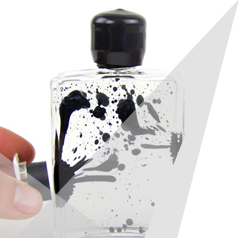Building model railways is a pastime enjoyed by thousands of people around the world; enthusiasts are stirred by a childhood fascination in mechanical marvels and fanatics include many you wouldn’t expect. Famously, Rod Stewart, Roger Daltrey and the late, great Frank Sinatra all own and have talked about their love for model railways.
Magnets have had a long association with model-making and model railways and as magnets have got stronger and smaller, their uses have grown! Typically, they are used for coupling and decoupling, holding scenery in place and most fundamentally, in the very motors that drive the locomotives.
Many of the locomotives that make up the cherished collections of enthusiasts have been acquired over many years and the magnets, which power the motors, may have seen better days. Back when many of the models were first produced 20 or 30 years ago, magnets were made of a material called alnico, an alloy of aluminium, nickel and cobalt. The development of alnico magnets was, at the time, a big leap forward in magnet manufacturing. However, their downfall is that over time they will lose their magnetism. Step forward super-strong neodymium magnets; these amazing magnets are made from the most powerful magnetic material commercially available and, more importantly, they will not lose their magnetism over time.
With the help of local model railway enthusiasts, firs4magnets developed a neodymium magnet that fits perfectly within a Tri-ang X03/X04 motor, a Horny Dublo 2 and 3 and Rail and Wren models with vertical motors. Each magnet measures 12.7mm x 9.3mm x 13.2mm and has a 2.5mm hole which runs parallel to the direction of magnetism for fixing in place.
Fitting them is an easy task for those with experience of working with model locomotives, as explained by Malcolm, a customer and fellow model railway enthusiast from the West Midlands.
How to replace the magnet in a Tri-ang/Hornby motor
Step one
Firstly, remove the motor from the locomotive and check the polarity of the magnet. In the photo, it is checked with a compass (the north of the compass will point to the south pole of a magnet), but you can also identify the poles of a magnet using our smartphone application or by using a pole tester to avoid any doubt.
Step two
Remove the nut and screw holding the old magnet in place. There is no need to remove the top spring and the brushes unless you wish to give the motor a clean.
Step three
Take the new neodymium magnets and check the direction of the poles. Handle the magnet with care as they are very strong and will attract steel objects from a couple of inches away.
Step four
Place the neodymium magnet in the motor, insert the screw through the holes and fasten in place with the nut, taking care to ensure that the poles of the magnet are pointing the same way as the old magnet.
Step five
Put the motor back into the locomotive and test everything is running smoothly before replacing the locomotive chassis.
We’d like to extend our thanks to Malcom for the great pictures and step-by-step instructions.







